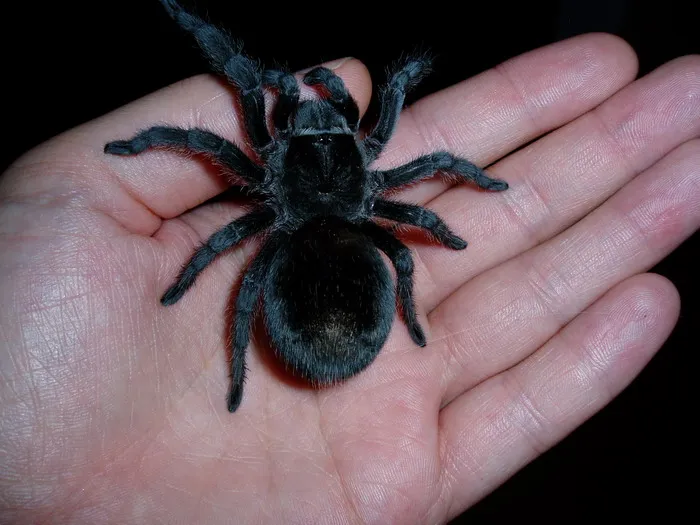Understanding the Brazilian Black Tarantula
The Brazilian Black Tarantula (Grammostola pulchra) is a popular choice for tarantula enthusiasts due to its docile temperament and stunning appearance. This species is known for its velvety black coloration, making it a visually striking pet. Before bringing one home, it’s important to understand its specific needs to ensure a healthy and fulfilling life for your tarantula. This comprehensive guide will provide you with the essential information you need to care for your Brazilian Black Tarantula, covering everything from habitat setup and feeding to recognizing potential health issues. Understanding the basics is critical for a successful tarantula keeping experience.
Origin and Characteristics
Native to the grasslands and forests of southern Brazil, the Brazilian Black Tarantula is a terrestrial species, meaning it spends most of its time on the ground. They are relatively slow-growing, reaching a mature size of up to 6-8 inches in leg span. Their lifespan can be quite long, with females living for 20 years or more, while males typically live for 5-7 years. Their overall docile nature, combined with their striking appearance, has made them a favorite amongst tarantula keepers. Their beauty, however, does not come without responsibility and understanding their needs is paramount.
Temperament and Handling
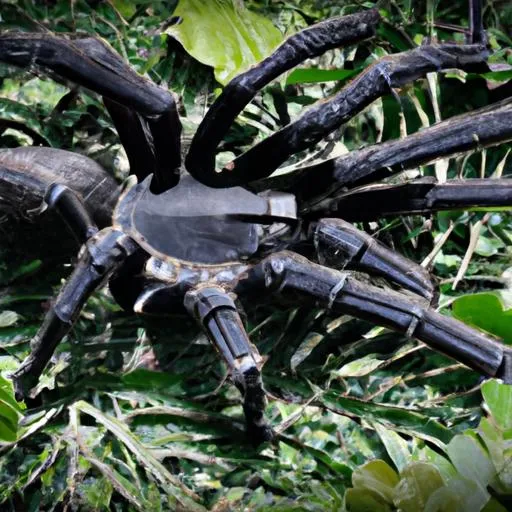
Brazilian Black Tarantulas are generally considered to be one of the more docile tarantula species. They are not prone to biting unless provoked, and they rarely flick urticating hairs, a defense mechanism used by some other tarantula species. However, it’s essential to remember that they are still wild animals and should be handled with caution. Handling is generally discouraged unless necessary, such as for enclosure maintenance. If you must handle your tarantula, do so gently and slowly, avoiding sudden movements. Always wash your hands thoroughly before and after handling to prevent contamination. Always supervise children around tarantulas and educate them on responsible pet ownership. Remember to approach tarantulas with respect and understanding.
Essential Brazilian Black Tarantula Care Tips
Providing the right environment is key to keeping your Brazilian Black Tarantula healthy and happy. This includes the right habitat, proper feeding, and regular maintenance. It is important to replicate, as closely as possible, their natural environment. By following these care tips, you can create a thriving environment for your tarantula, which in turn improves the quality of life for your pet. Remember, prevention is better than cure, and proper care is the best way to ensure the health and well-being of your Brazilian Black Tarantula.
Habitat Setup
The habitat setup is crucial for the well-being of your Brazilian Black Tarantula. It should provide a secure, comfortable, and enriching environment. The enclosure should be large enough for the tarantula to move around, hunt, and feel secure. The temperature and humidity levels should be maintained within the appropriate ranges. Regular cleaning and maintenance are essential to prevent the buildup of waste and mold. Providing the right habitat will contribute to the long-term health and well-being of your Brazilian Black Tarantula. The overall goal is to create a space that replicates their natural habitat and provides all the essentials for survival.
Enclosure Size and Type
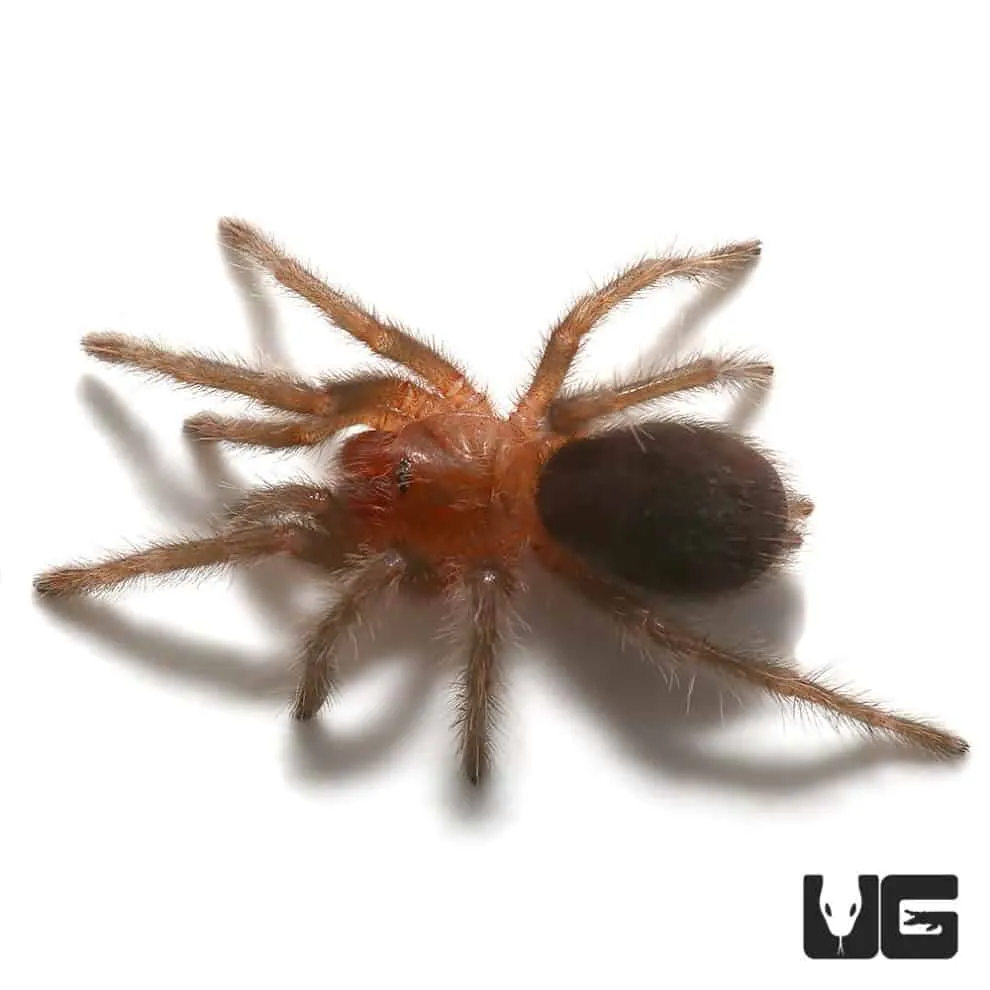
A secure enclosure is the foundation of tarantula keeping. For a juvenile Brazilian Black Tarantula, a 5-gallon tank or a similarly sized plastic container with a secure lid is usually sufficient. As your tarantula grows, you’ll need to upgrade the enclosure. For an adult, a 10-20 gallon tank or equivalent is recommended. The enclosure should have good ventilation, but also be escape-proof. Ensure the lid fits snugly and has no gaps. Glass or clear plastic enclosures are ideal, as they allow for easy viewing. Ensure the enclosure allows for proper temperature and humidity regulation. Always choose an enclosure that is appropriate for the tarantula’s size and needs.
Substrate and Decoration
The substrate is the bedding material in your tarantula’s enclosure. It serves several purposes including providing a surface for the tarantula to walk on, helping to maintain humidity, and allowing the tarantula to burrow. A good substrate for a Brazilian Black Tarantula is a mix of peat moss, coco fiber, and a bit of vermiculite. This mix holds moisture well and allows for burrowing. Avoid substrates like cedar or pine shavings, as they can be harmful to tarantulas. Provide a hide, such as a piece of cork bark or a half-log, for your tarantula to feel secure. You can also add other decorations like artificial plants or rocks. Ensure the decorations are secure and won’t fall on the tarantula. Substrate depth should be approximately 3-5 inches to allow for burrowing.
Temperature and Humidity
Maintaining the correct temperature and humidity levels is crucial for your tarantula’s health. The ideal temperature range for a Brazilian Black Tarantula is between 75-85°F (24-29°C). You can use a heat mat or a low-wattage heat lamp to maintain the temperature. Place the heat source on the side of the enclosure, not directly underneath, to prevent overheating. Humidity levels should be kept between 65-75%. You can monitor humidity with a hygrometer. To maintain humidity, lightly mist the enclosure with water every few days, and ensure there is a water dish available. Avoid over-misting, as this can lead to mold growth. Proper temperature and humidity levels will contribute to your tarantula’s molting process.
Feeding Your Tarantula
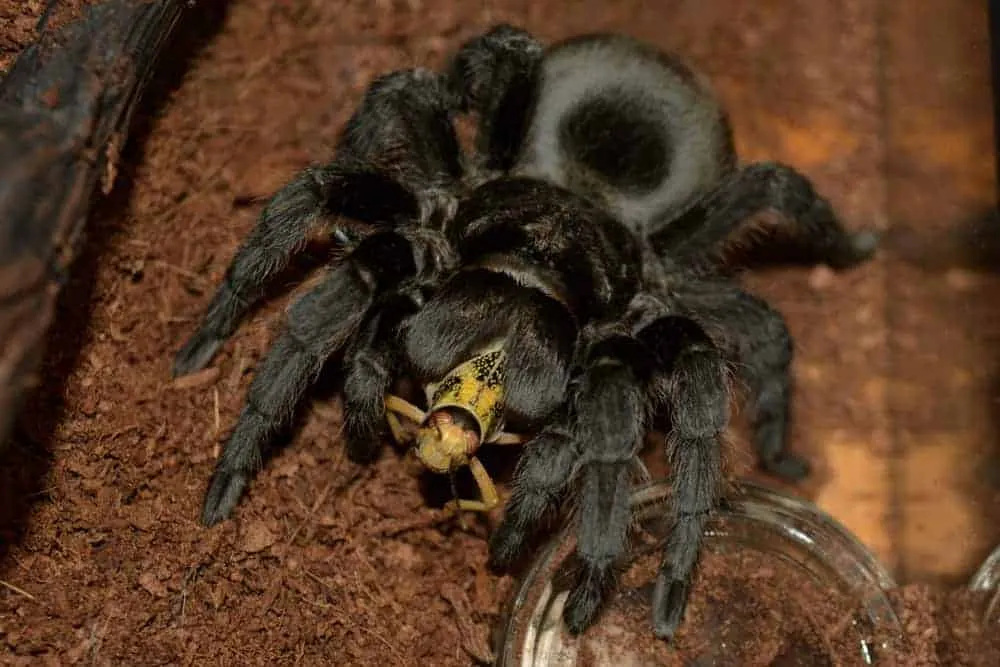
Feeding is one of the most enjoyable parts of tarantula keeping, and understanding their dietary needs is essential for their health. They are opportunistic predators, meaning they will eat almost anything they can overpower. The type and frequency of feeding will depend on the size and age of your tarantula. Overfeeding can lead to health problems, while underfeeding can stunt growth. Always remove uneaten food to prevent the buildup of mold and mites. Providing a varied diet and observing your tarantula’s eating habits are key to ensuring its well-being. Proper feeding is a cornerstone of tarantula care.
Food Types and Frequency
The primary food source for Brazilian Black Tarantulas consists of live insects. Crickets, mealworms, and roaches are all good options. The size of the prey should be appropriate for the tarantula’s size; a good rule of thumb is that the prey should be no larger than the tarantula’s body. Juveniles should be fed 2-3 times a week, while adults can be fed once a week or every other week. Always dust the insects with a calcium and vitamin D3 supplement to ensure your tarantula gets the nutrients it needs. Avoid feeding your tarantula wild-caught insects, as they may carry parasites or pesticides. Carefully observe your tarantula’s feeding behavior and adjust the frequency accordingly.
Watering and Hydration
Clean water is essential for your tarantula’s survival. Always provide a shallow water dish in the enclosure. The water dish should be small enough to prevent the tarantula from drowning, and it should be kept clean. Refill the water dish with fresh water regularly. In addition to the water dish, you can also mist the enclosure lightly with water to maintain humidity. However, avoid over-misting, as this can lead to mold growth and other problems. Ensure that water is always available, and that it is always clean. Clean, fresh water is essential for maintaining the overall health and well-being of your tarantula.
Maintaining a Healthy Environment
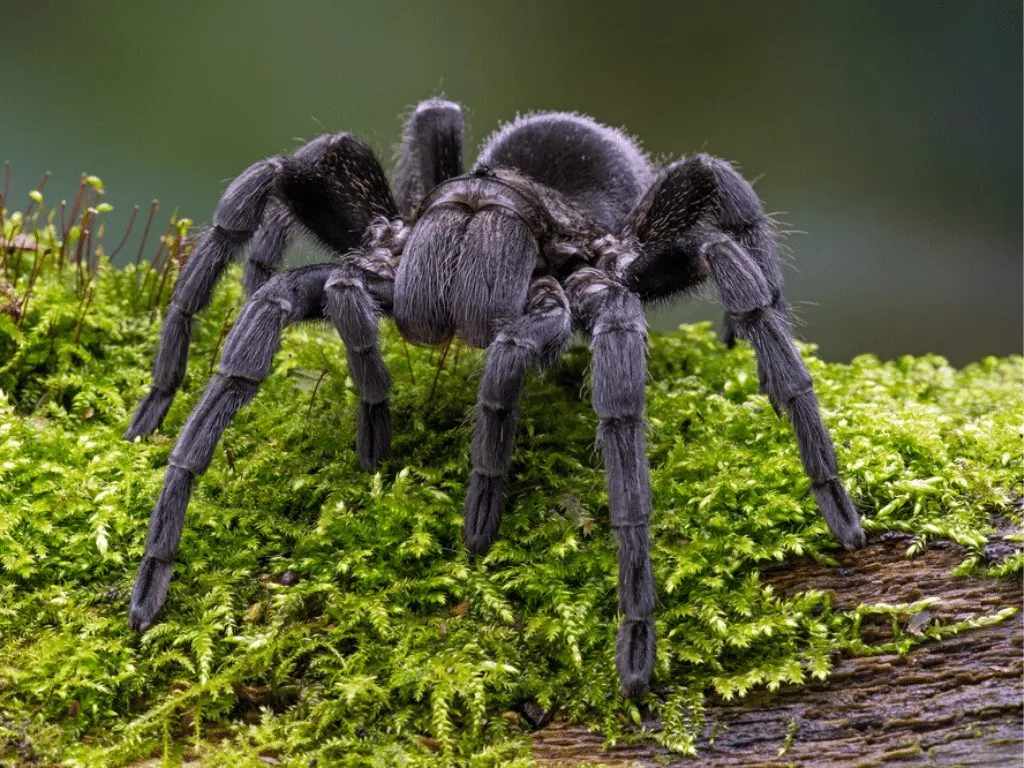
Regular cleaning and maintenance are essential to maintaining a healthy environment for your Brazilian Black Tarantula. This includes removing uneaten food, cleaning the enclosure, and monitoring humidity and temperature levels. A clean and well-maintained enclosure will not only help keep your tarantula healthy but also make it more enjoyable to observe. Create a regular schedule to ensure that all maintenance tasks are completed on time. Proper maintenance will eliminate potential health issues and ensure a long and fulfilling life for your pet.
Cleaning and Maintenance
Spot-clean the enclosure regularly, removing any uneaten food, dead insects, or waste. Replace the substrate every 6-12 months or when it becomes heavily soiled. When cleaning the enclosure, remove the tarantula to a temporary container. Clean the enclosure thoroughly with warm water and a mild soap. Rinse the enclosure thoroughly to remove all traces of soap. Replace the substrate and decorations, and then return the tarantula to the clean enclosure. Always wash your hands thoroughly before and after handling the tarantula or cleaning the enclosure. Maintain a regular cleaning schedule to keep the enclosure sanitary.
Recognizing and Addressing Health Issues
While Brazilian Black Tarantulas are generally hardy, they can still get sick. Being able to recognize the signs of illness is crucial for providing timely care. Some common health issues include mites, fungal infections, and dehydration. Signs of illness include lethargy, loss of appetite, and unusual behaviors. If you suspect your tarantula is sick, consult with a veterinarian who specializes in exotic animals. Preventative measures, such as maintaining a clean enclosure and providing proper temperature and humidity, can help prevent many health issues. Early detection and intervention are key to ensuring a positive outcome.
Important Considerations
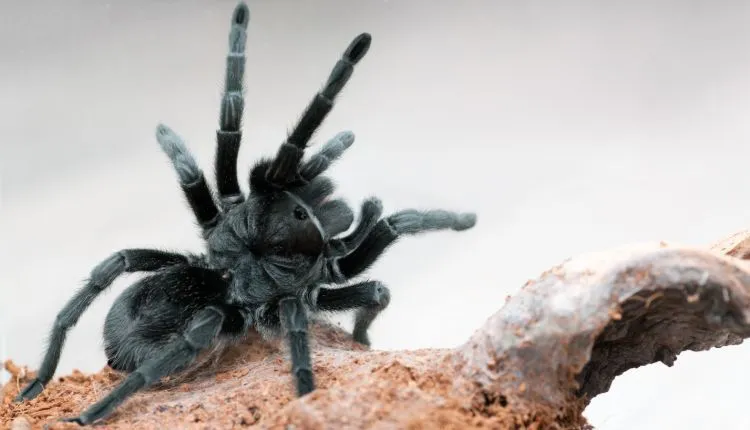
In addition to the basic care tips, there are a few other important considerations to keep in mind when caring for a Brazilian Black Tarantula. This includes understanding their lifespan and growth, as well as the molting process. Being prepared for these events will ensure that you are not caught off guard, and can continue to provide proper care for your pet. Understanding the lifespan and growth of a tarantula is crucial for proper planning. These aspects of tarantula care will greatly enhance your ability to provide the best care possible.
Lifespan and Growth
Brazilian Black Tarantulas are relatively slow-growing, especially compared to other tarantula species. They can take several years to reach their adult size. As they grow, they will molt, shedding their exoskeleton. The frequency of molting decreases as they get older. Females can live for 20 years or more, while males typically live for 5-7 years. Keep this in mind when you are considering adopting a tarantula. Planning ahead will allow you to provide care for the entirety of your pet’s life.
Molting Process
Molting is a natural process in which tarantulas shed their exoskeletons to grow. It is important to provide a safe and stable environment during this time. Before molting, your tarantula may stop eating and become less active. They may also flip onto their backs. Do not disturb your tarantula during the molting process. After molting, the tarantula’s new exoskeleton will be soft and vulnerable. Do not feed your tarantula for a few days after molting to allow the exoskeleton to harden. Be patient and allow the natural molting process to take place without interruption. Provide a shallow water dish during and after molting to ensure proper hydration.
